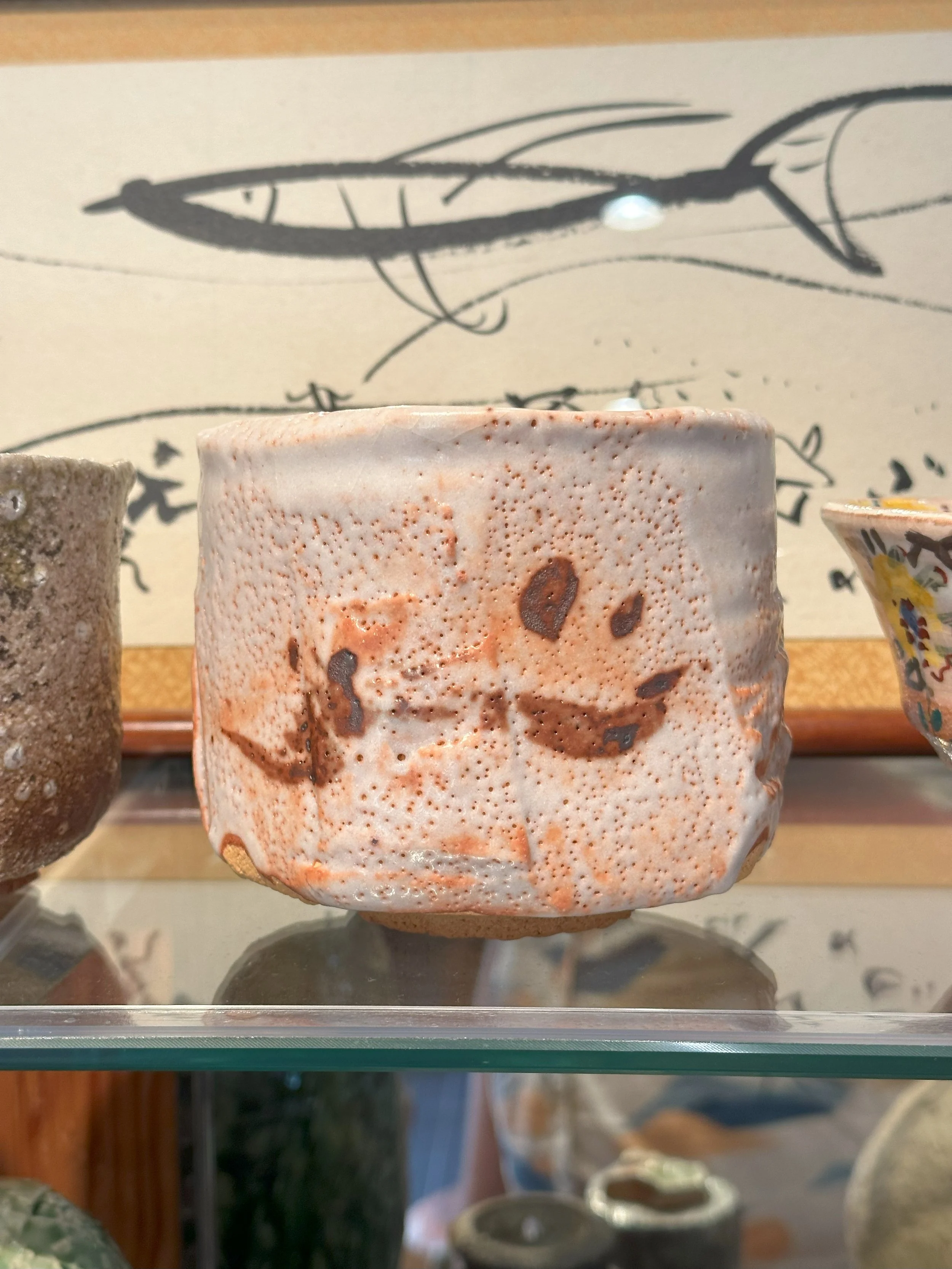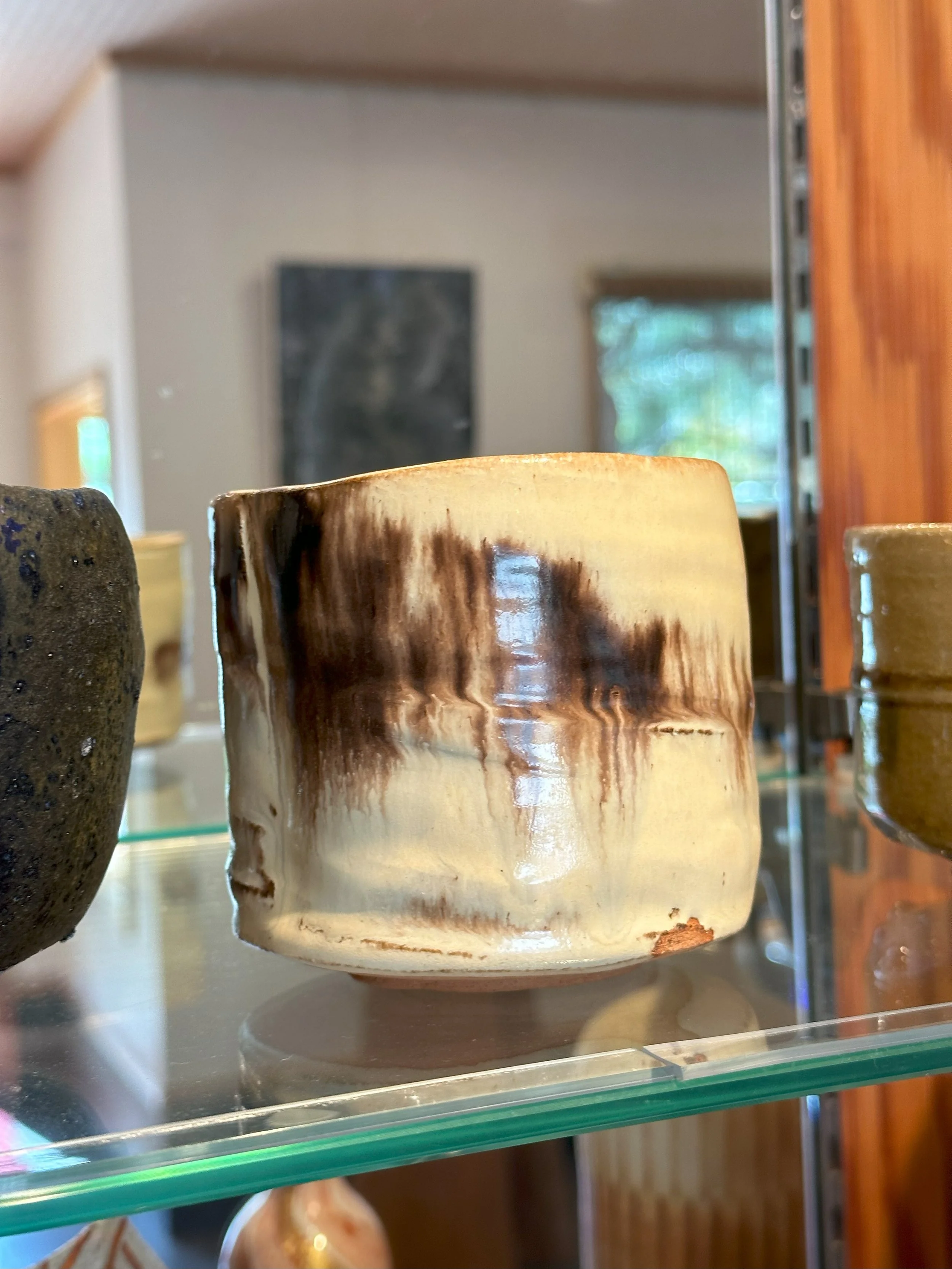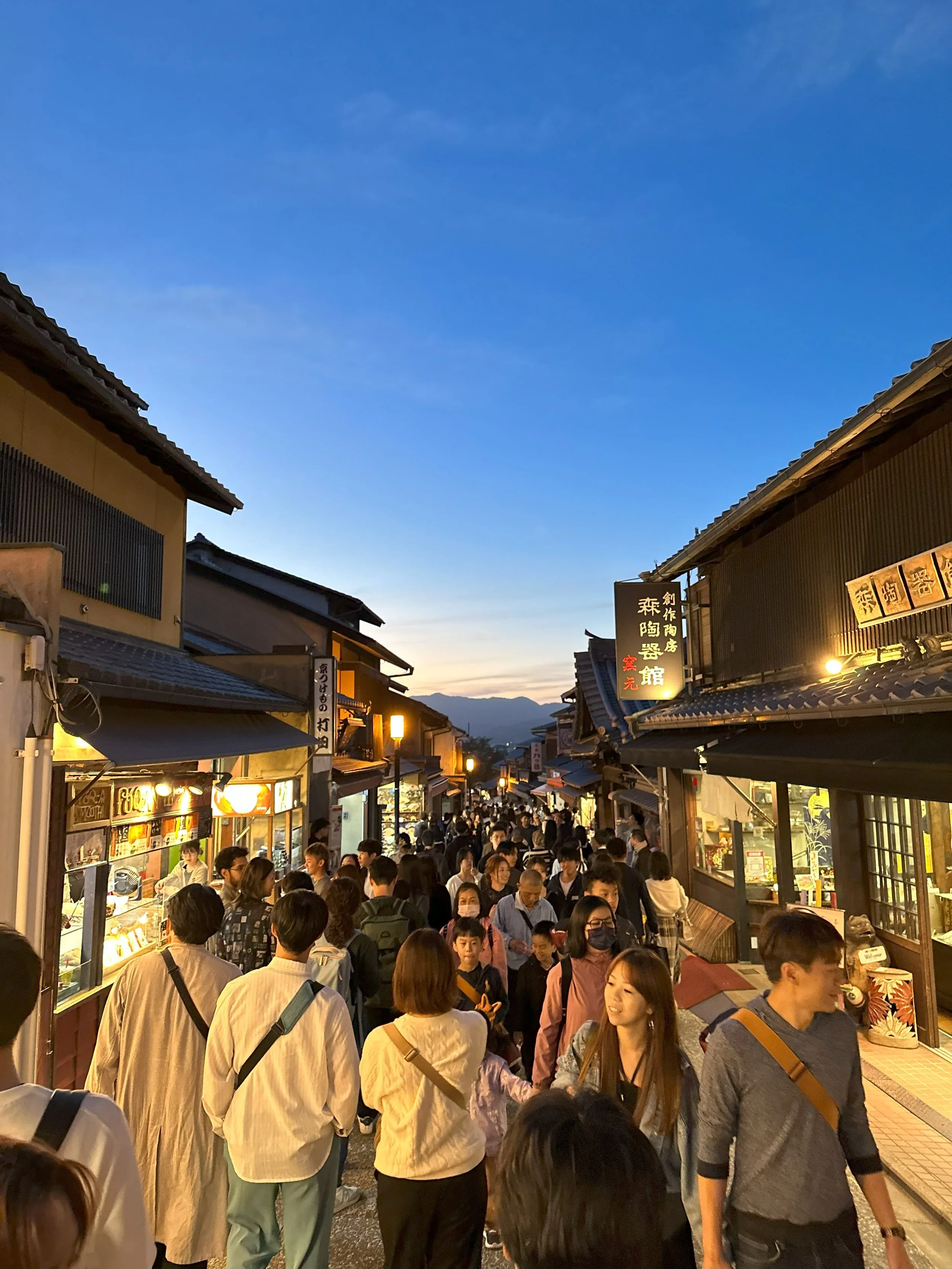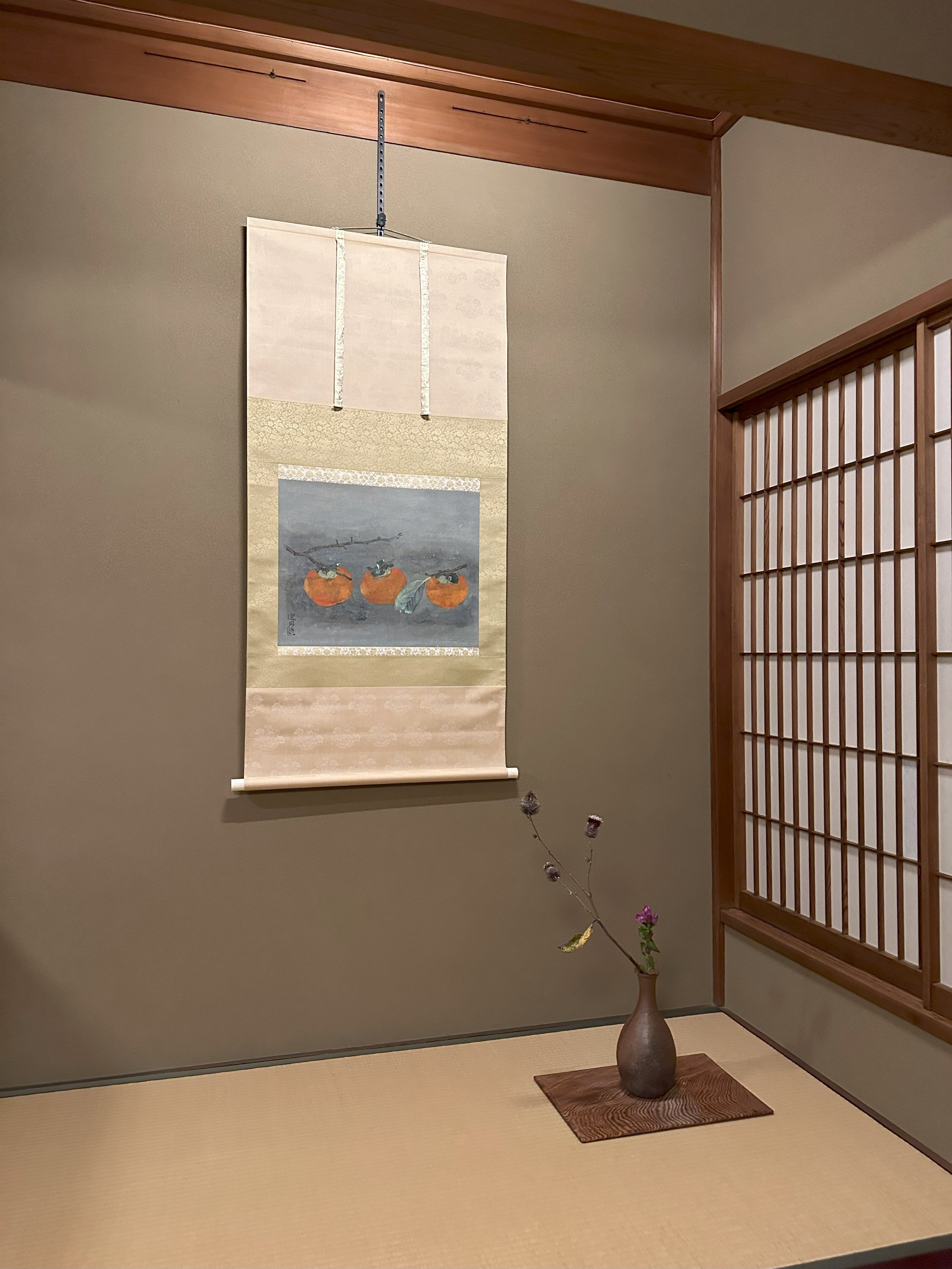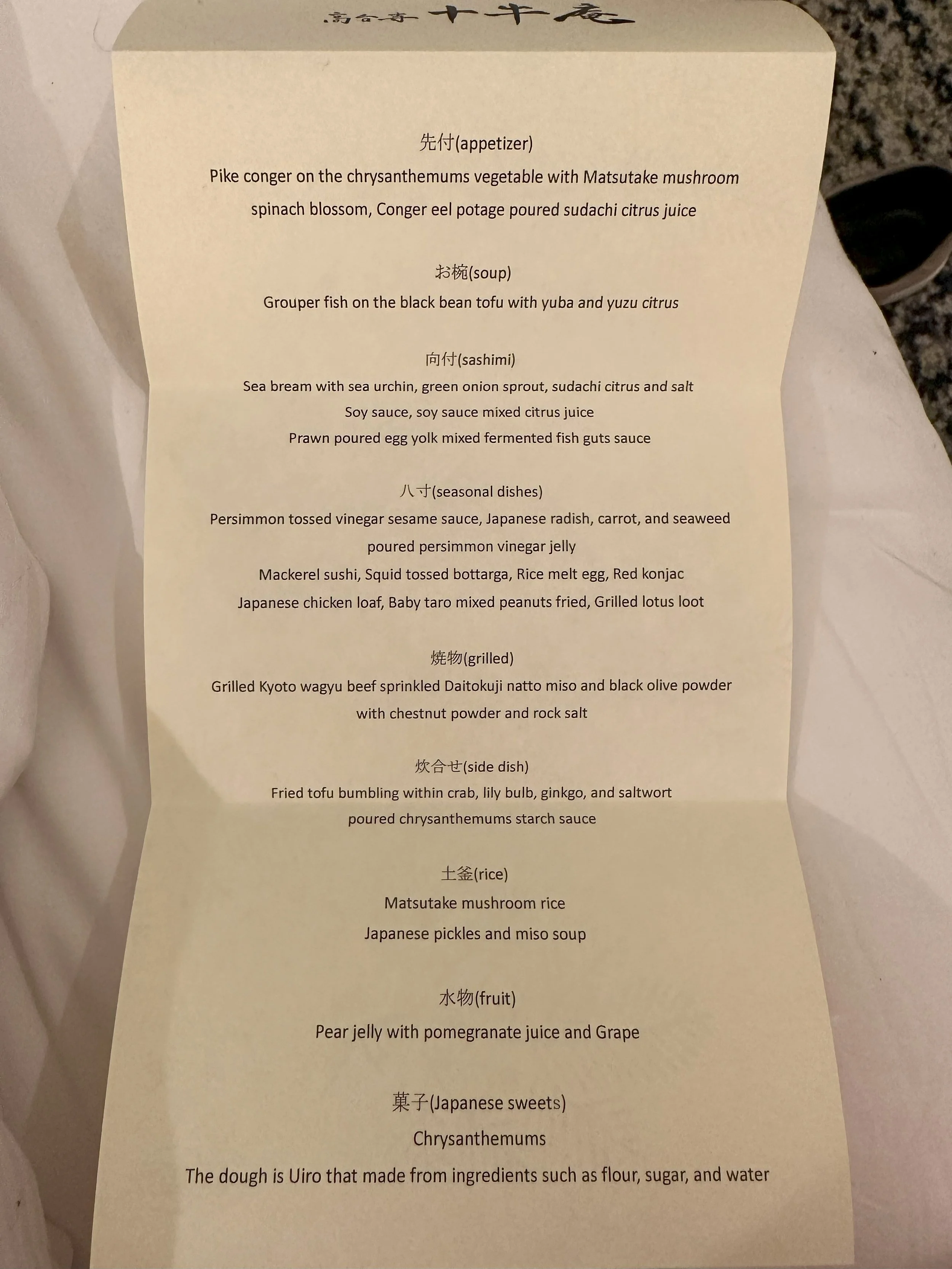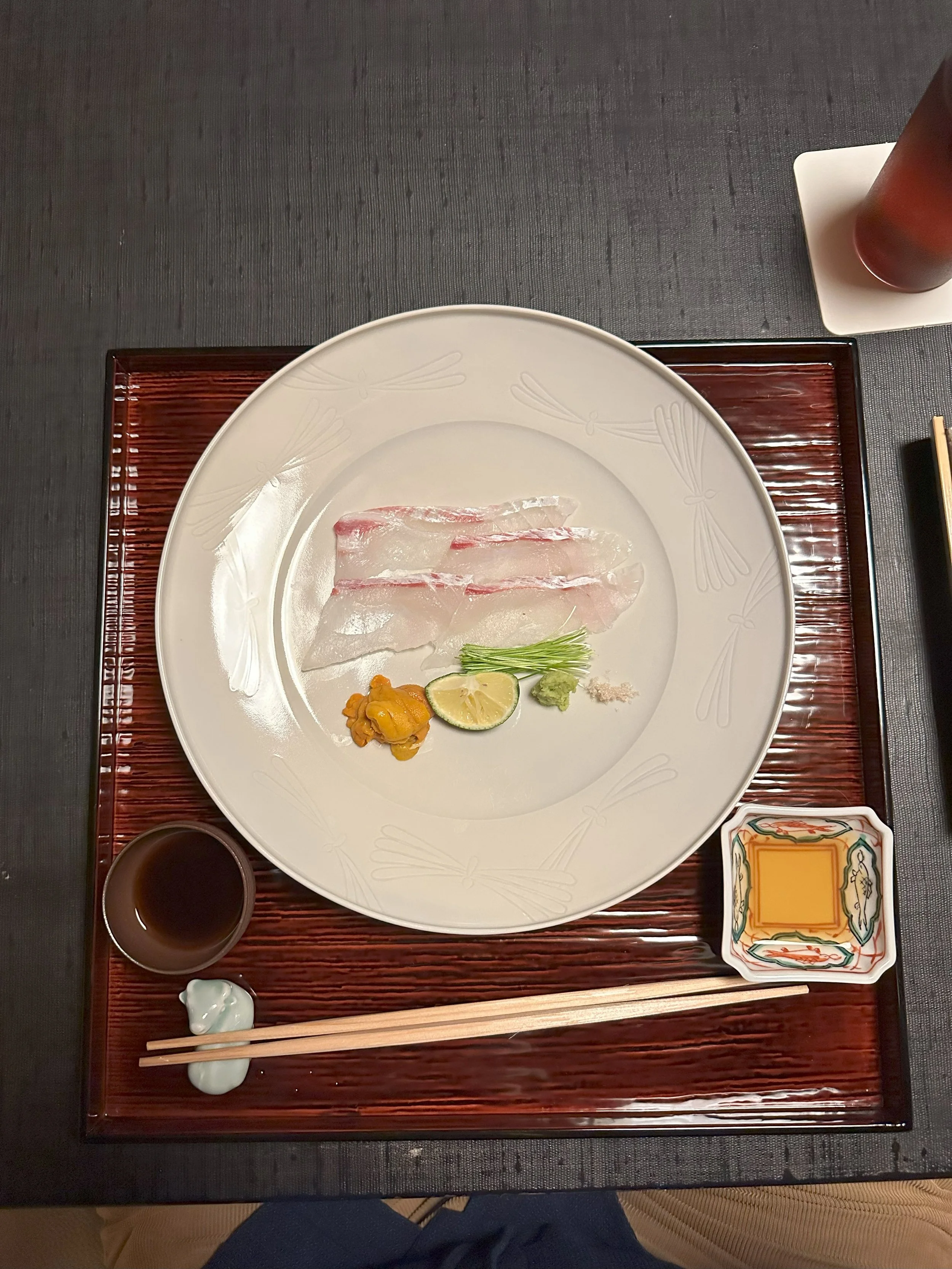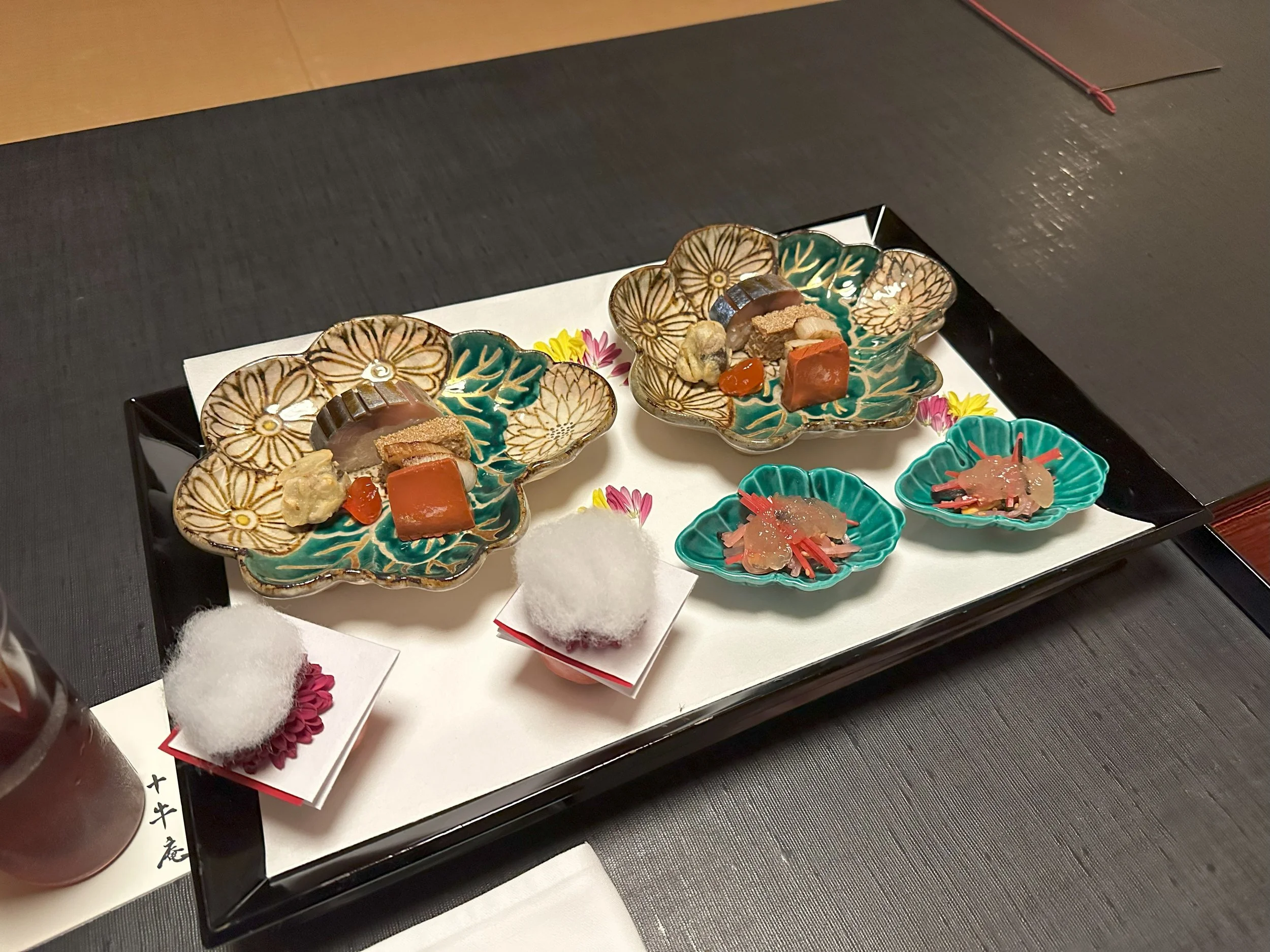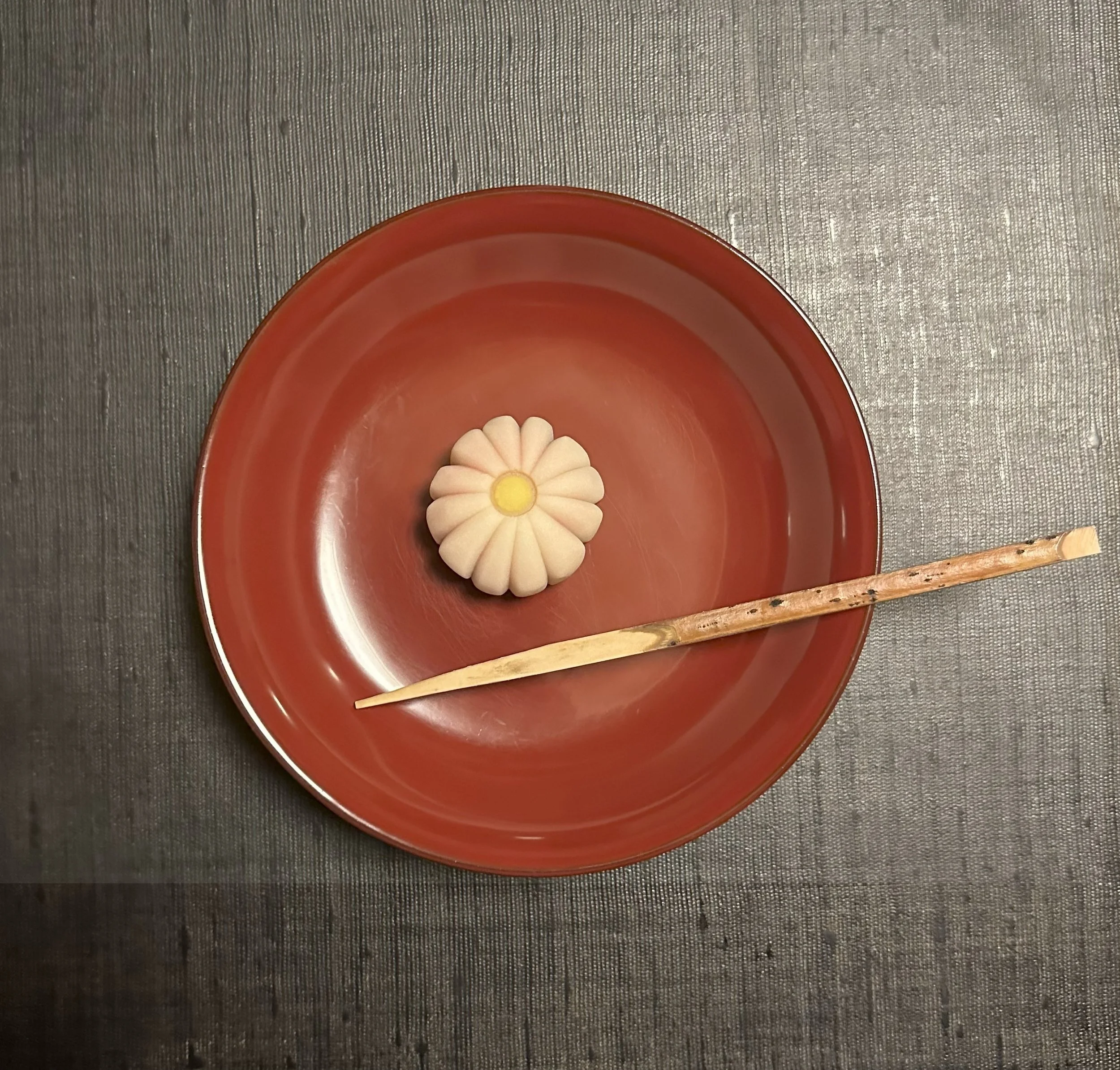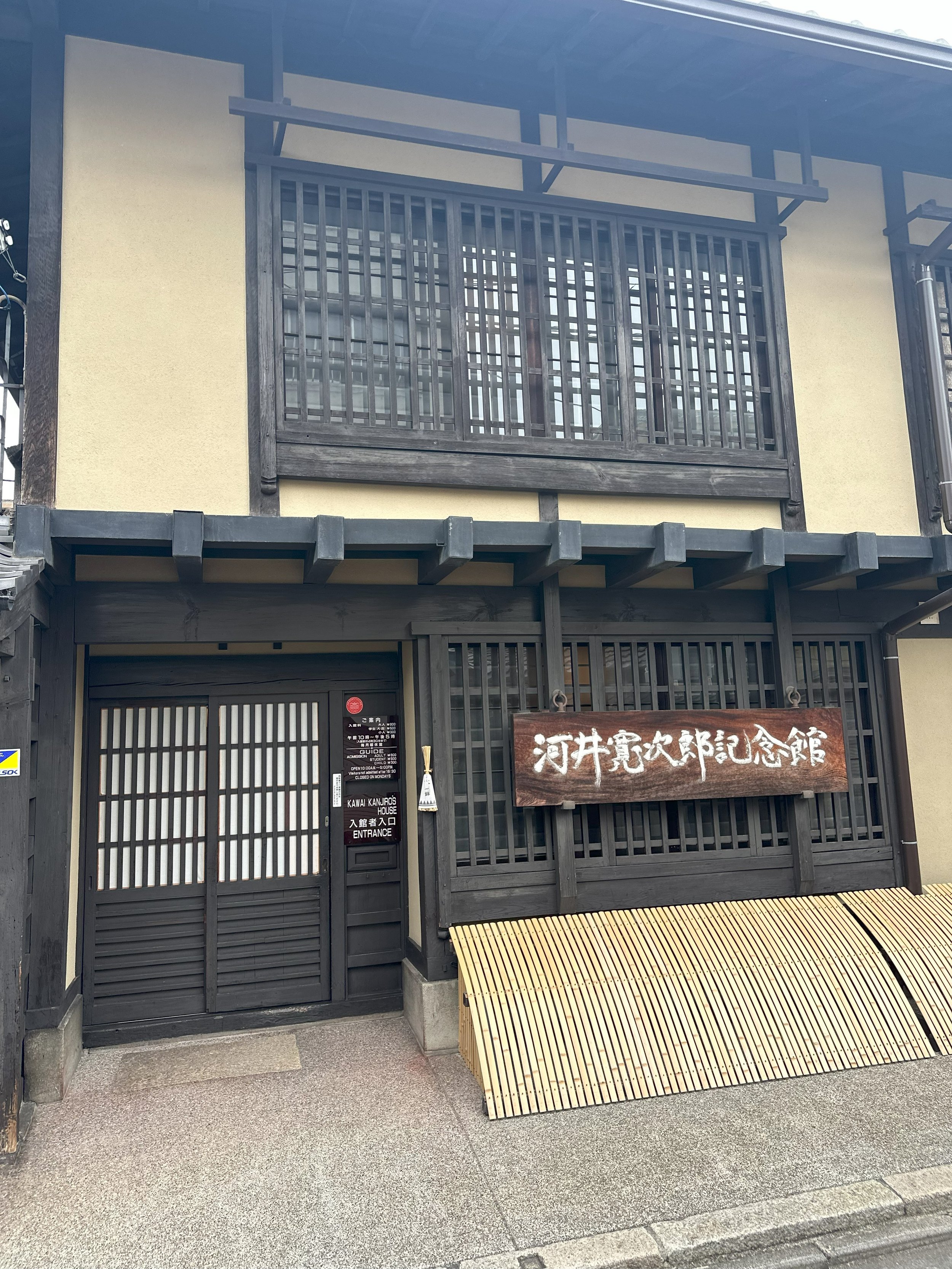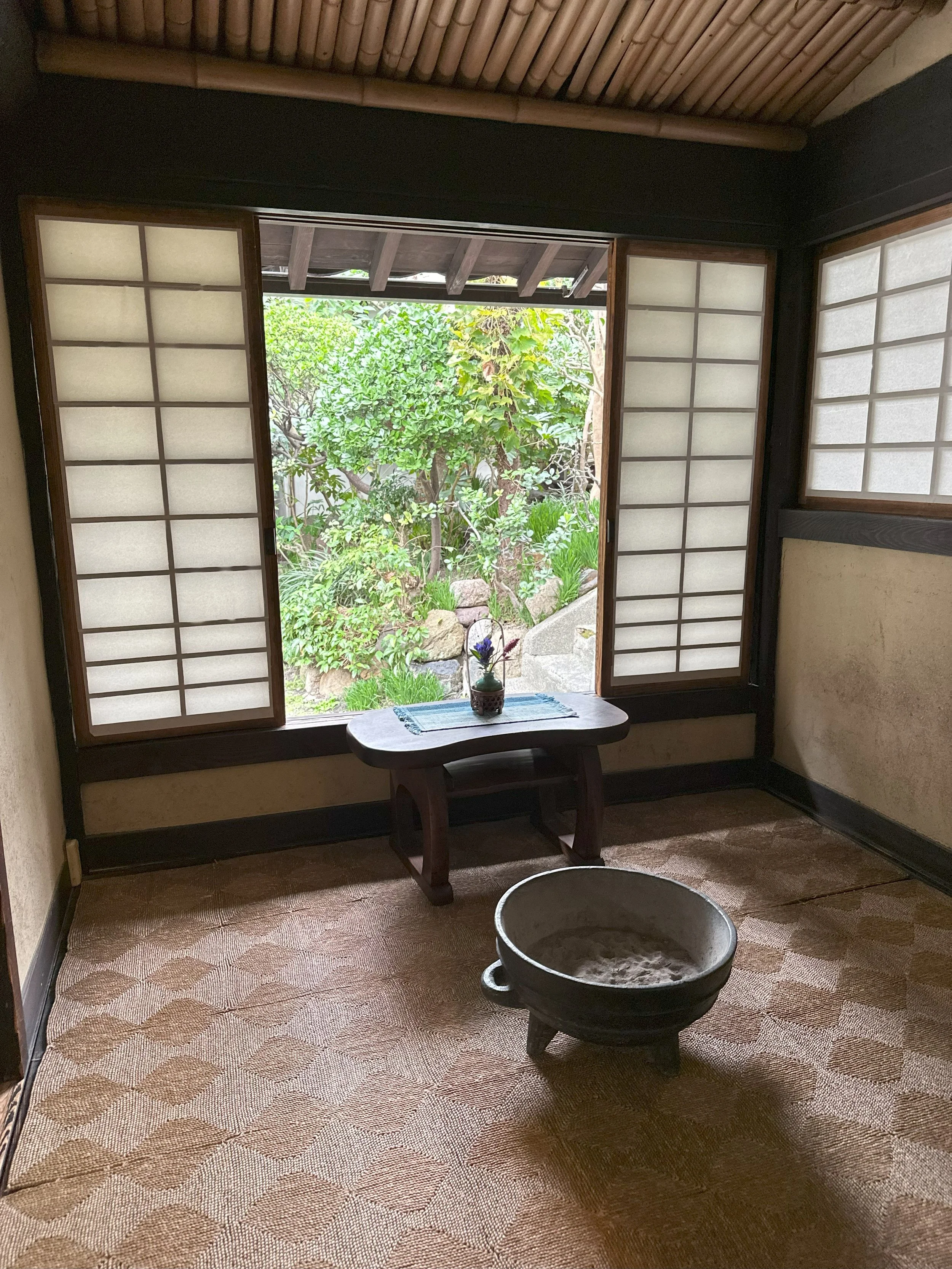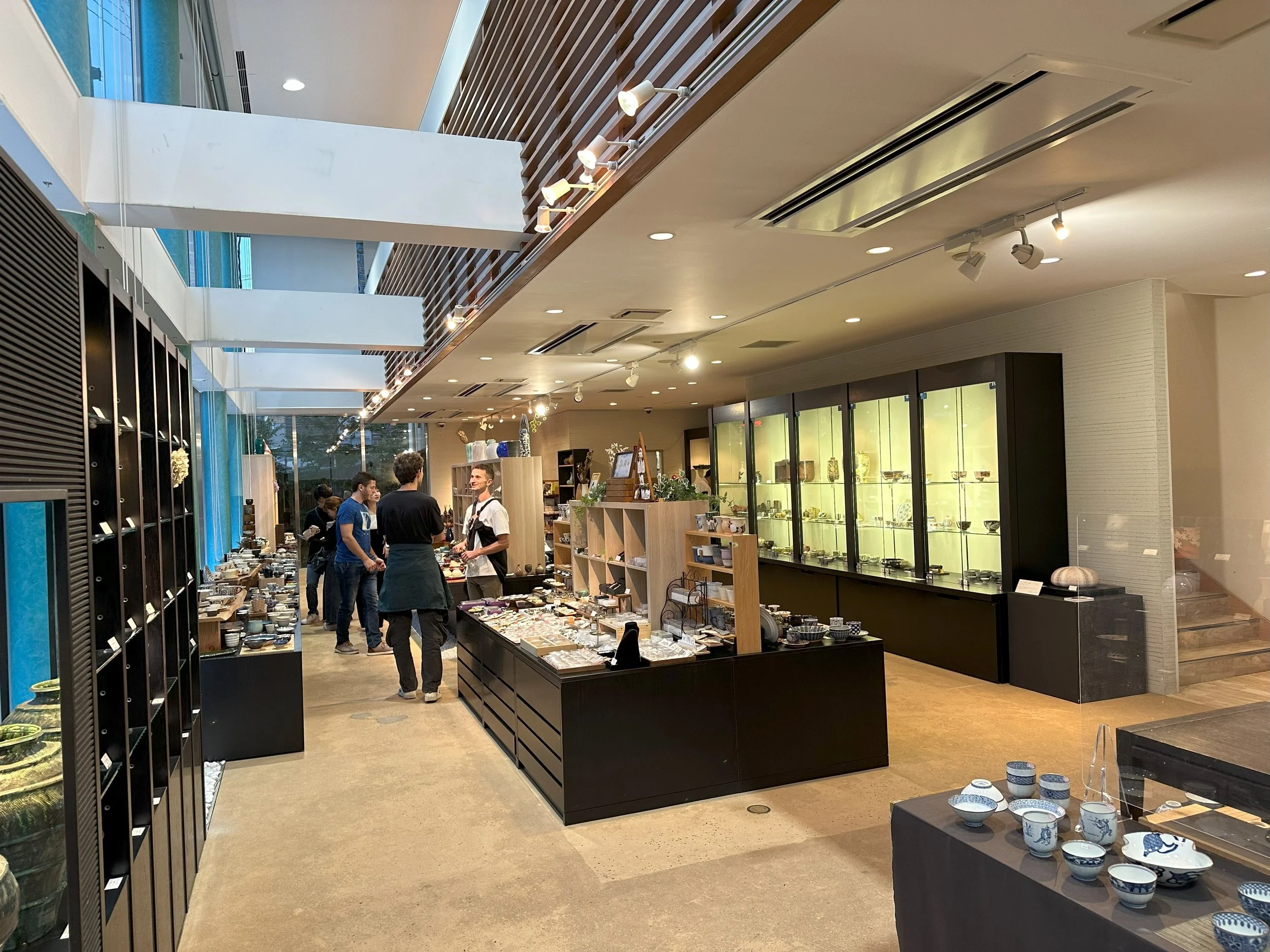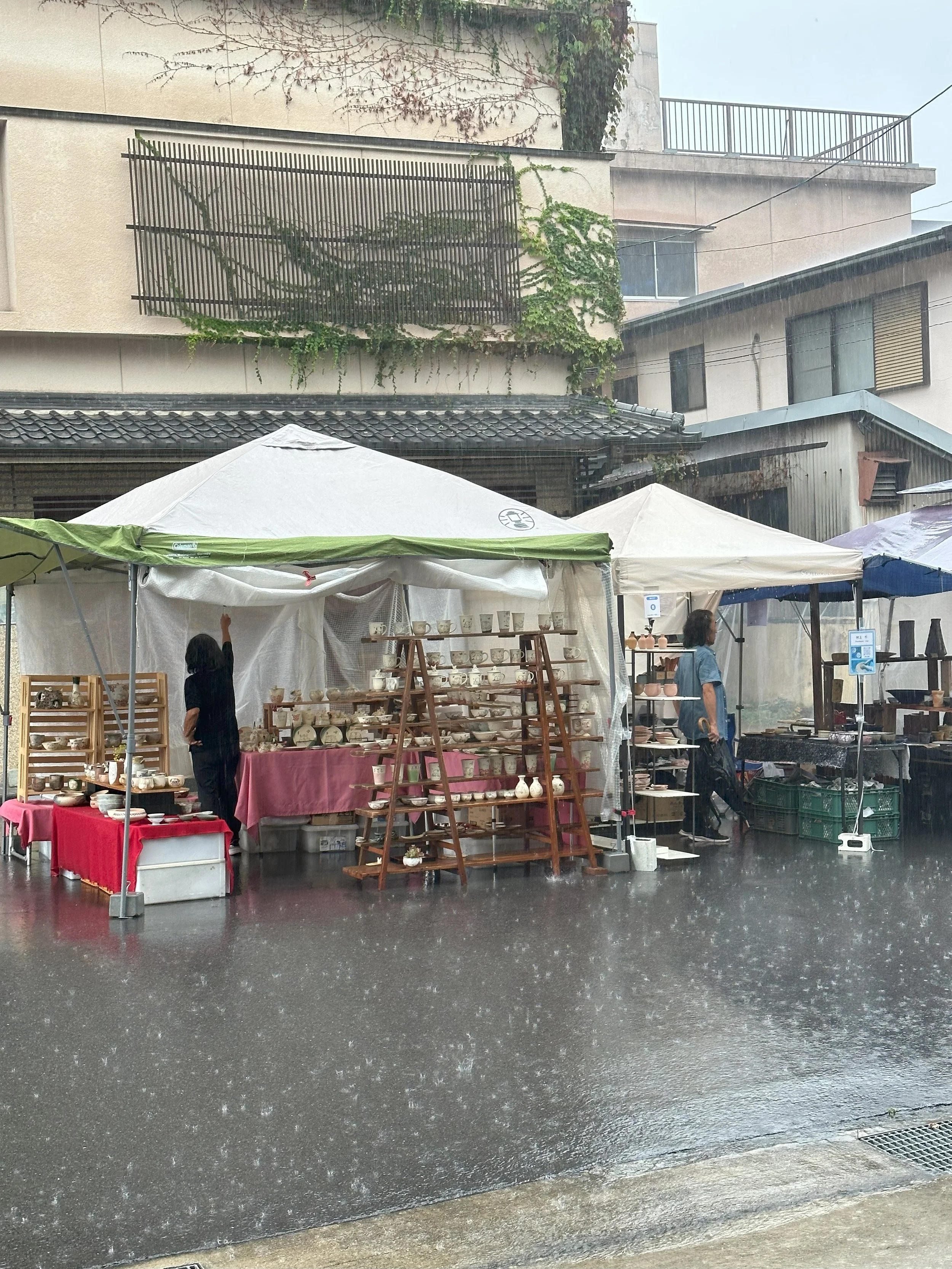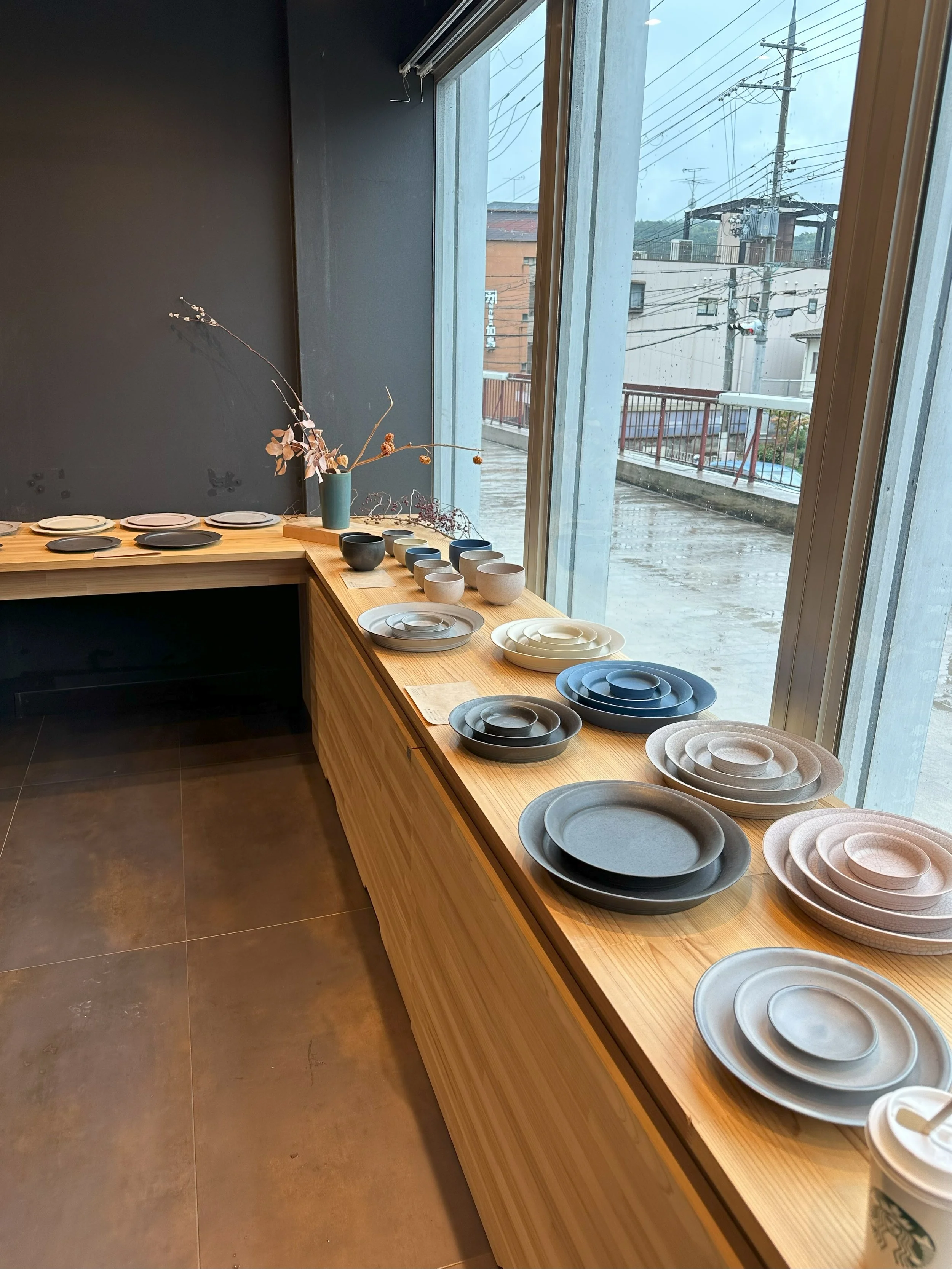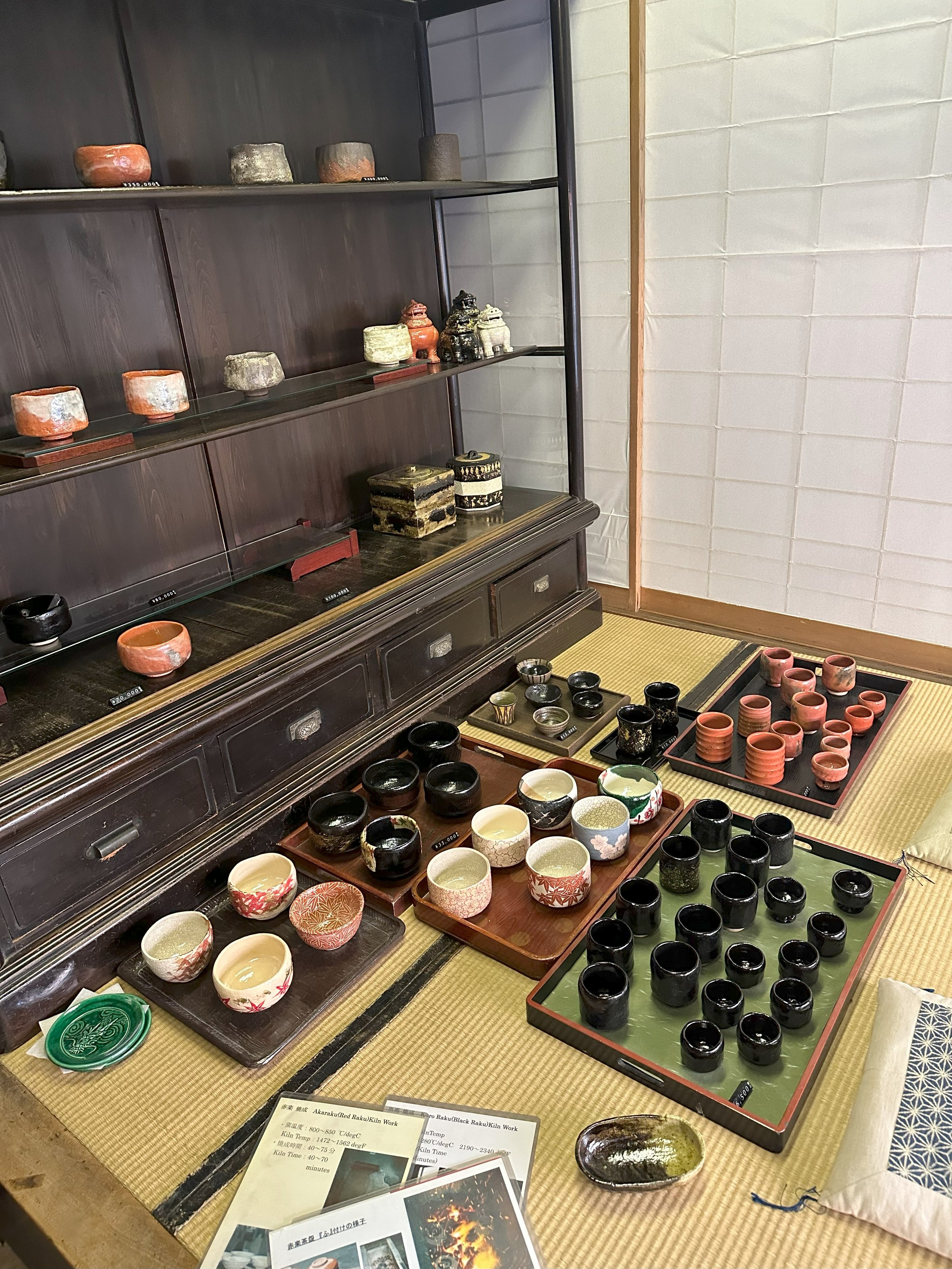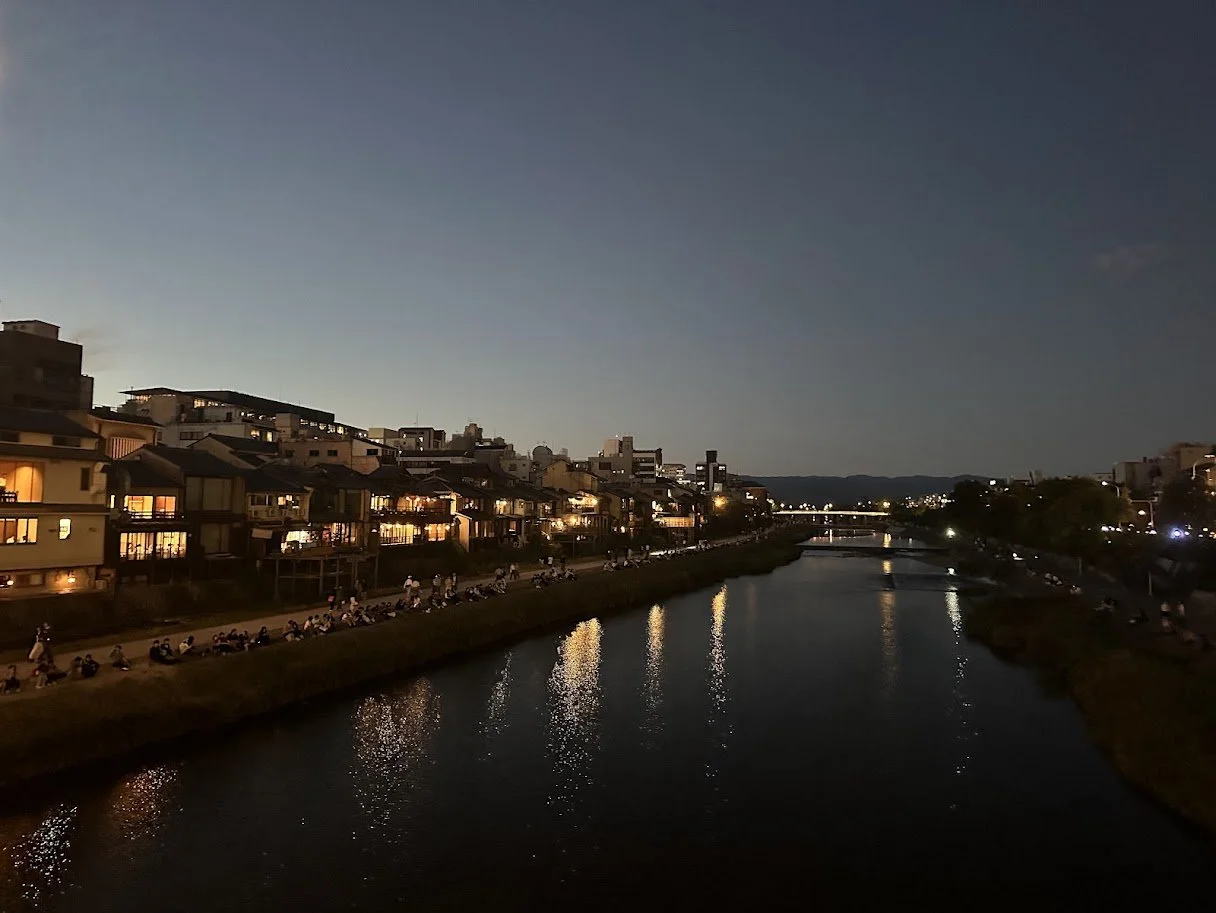
Kyoto
I actually visited Kyoto twice on this trip: once with my wife for 4 days, and then once on my own for a week while I did my workshop. The workshop has its own page, so I just merged all the ceramic goodies from both trips into this one page. Given the amount of time I spent here, I got the best exposure to the ceramics scene of all the cities we visited. And I STILL feel like I missed so much. By virtue of the constellation of new accounts I was following on Instagram, the day I got back to the States, I found three galleries I completely missed, but would have LOVED to visit.
Robert Yellin Gallery
Ask anyone where to go for ceramics in Japan, and the Robert Yellin Gallery will almost certainly top that list. He’s an American expat and Japanese pottery aficionado who’s been living in Japan for several decades, and his gallery is basically a shrine to the artform. He has a HUGE collection available for sale of artists both living and deceased, and has connections to contemporary artists all over the country. One of them even stopped by while I was there to discuss a livestream they’d done together the night before. I drooled over some lovely shino pieces (including one of Yamada Kazu’s “dancing flame” shinos, do yourself a favor and look it up), but eventually got a celadon yunomi by Tetsu Suzuki instead. Like a true collector, when I asked him what his favorites were at the moment, he looked at me like I was crazy and said, “They’re all my favorites. Let me show you what’s new though.”
Sannenzaka is one of the big tourist areas in Kyoto. It’s primarily a pedestrian street that climbs a hill to the Kiyomizudera temple. If you’ve seen a shot of Kyoto of a giant pagoda overseeing a crowded, traditional-looking street, it was probably taken here. It has a LOT of shops, including many ceramics shops and galleries. I’ll list some below, but the crown jewel is Asahido Honten, right near the top of the hill and temple. The front of the shop has a bunch of souvenir ceramics for passerby, but the further into the shop you get, you can find all sorts of wonderful ceramics, ranging from teacups for daily use to sculptures and $10k teabowls by contemporary artists. Further down the hill, there is also the Sannenzaka Museum, which is a small museum that focuses on traditional crafts. There was a specifical exhibit on enameled metalware
Sannenzaka, Kiyomizudera, and Asahido
Tea ceremony at Maikoya
We decided to do a tea ceremony while we were in Kyoto. We did it through a company called Maikoya that runs a foreigner-friendly tea house near Nishiki market. It was a good introduction to the logistics of a tea ceremony and the ideas underlying it. It was very much aimed at folks without any experience in chanoyu, so if you’re looking for a deep dive in the nuances of Urasenke vs Omotosenke, probably not what you’re looking for, but as someone who’d never been to a tea ceremony outside of an art museum demonstration, it did a great job of helping a few things “click.” It’s one thing to read about the steps, it’s another to smell the incense, hear the kettle bubbling, and feel the tatami mat under you. One quick note: their website says “with the option of wearing a traditional kimono.” That ‘option’ part wasn’t really optional. Immediately after giving our names, we were shoved into changing rooms and told to take our pants off before we had a chance to say we’d like to keep them on please. We did look cute in our kimonos though, and of course that was my mom’s favorite photo of the trip.
Zohiko, Asobe, and Urushi Lacquerware
Somewhat adjacent to ceramics (often literally) is urushi lacquerware. If you’re not families with it, think of the miso soup bowls at your local Japanese restaurant. If it’s a really nice place, that’s lacquer, if not, it’s plastic pretending to be lacquer. It’s made by applying layers of tree resin on wood, bamboo, ceramic, or metal to make it more durable, decorative, and waterproof. I’ve never given it two thoughts before this trip, as my experience was limited to aforementioned miso soup bowls, but we visited two high end shops in Kyoto specializing in the stuff, and I have a whole new appreciation for it. Check out Zohiko north of Nishiki market, and Asobe a little further south.
First Kaiseki - Kodaiji Jugyuen
We did two kaiseki (traditional Japanese multicourse banquets) while we were in Japan, and they can be a great way to get some hands-on experience with a bunch of different pots. These range from ‘a nice multicourse meal at your hotel’ to ‘EXTREMELY FORMAL AFFAIRS.’ We did a few of both ends of the spectrum, with the latter being at a pair of Michelin-starred restaurants: the first at Kodaiji Jugyuen in Kyoto, the second at Kashiwaya Senriyama in Osaka (described below). Visual aesthetics are important in kaiseki, so at both restaurants, we ate about ten courses off a HUGE variety of handmade pottery and lacquerware. Both were in private tatami rooms with paintings, calligraphy, and ikebana arrangements, so they were a great way of experiencing a lot of different crafts at once. Kodaiji Jugyuen had the leg up on ambience, because our door was open to the garden where we could hear a shamisen playing and the crickets chirping
POJ Studio
This trip was filled with many instances of serendipity striking in weird ways, one of which was stumbling on POJ studio. They’re a studio that sells DIY incense and kintsugi kits and the like online, and run classes on how to use them above their shop in Kyoto. I’d bought some stuff from them early in the pandemic in my “we’re never getting out of here oh god I need to buy all the things to do to keep me busy” phase, so it was funny to stumble on them in person. We wouldn’t even have seen them if it hadn’t been for some tomfoolery with the Kyoto National Museum being closed on a weird day, so yay for random chance.
Kawai Kanjiro House
Kawai Kanjiro House. Kanjiro was potter, and one of the most important artists and philosophers of the Mingei movement. He was a contemporary of Shoji Hamada, who’s the more famous of the two outside of Japan. Kanjiro’s house and workshop are preserved in a museum in eastern Kyoto. Even if you’re not interested in the artist himself, his house is a great snapshot of what houses and workshops looked like in early 20th century Kyoto
Kyoto Ceramics Center
The Kyoto Ceramic Center is near the base of Sannenzaka. It’s a great gallery and shop, with dozens of contemporary artists wares available downstairs, and a rotating gallery upstairs. The surrounding area is a bit of a ceramics hotspot. It’s near the Kawai Kanjiro house, and there’s a dozen other shops and galleries in the area. I stopped by twice, the first time just exploring, then second time looking for a chawan by a specific artist (Idutsu Toshihiko). They didn’t have any, but they did have a mug by him. I also got to watch the overzealous shopkeepers aggressively help another american tourist. He walked in and used Siri to ask if they had any kyusu teapots. Turns out: they did. And they kept bringing more and more and more of them to him until he used Siri to say thank you, that’s enough please.
Kiyomizu Ceramics Festival
While at the Kyoto Ceramics Center, I saw a flyer for the Kiyomizu Ceramics Street Festival the following weekend. Kiyomizu (which is not the same as Kiyomizudera) is an area southeast of Kyoto Station that’s been a ceramics hub for centuries. It was a bit of a trek to get there, but was a HUGE street fair all dedicated to ceramics. The fair was centered around a cluster of established galleries, and the streets were full of tents and stalls where contemporary artists could sell their wares. Despite some torrential rain I spent a few hours there, and left with a STACK of new pieces.
Kyoto National Museum
This is a thing. You should go. They have a lovely collection of ceramics. I couldn’t see them because their normal collection was closed due to construction. I did see a lovely special exhibit on Pure Land Buddhism, but alas, that was only paintings, calligraphy, and the like.
Raku Museum
The Raku pottery family is still active in Kyoto, and run a museum about their family’s history in the north of the city. Raku pottery originated alongside the tea ceremony in Japan, and doesn’t mean quite the same thing as it does in the western world. While both styles involve taking pieces from the kiln while they’re still red-hot, western raku involves using combustibles to decorate and reduce the fired pots. Japanese raku ware is simply removed from the kiln and set aside, resulting in more minimalist black and red results. It’s a small but mighty museum, and was split between an exhibit on the differences of each generation of the family, and an exhibit on raku fired food vessels for kaiseki. The current head of the family, Kichizaemon XV, curated the exhibits, but don’t expect to see any of his pieces in the gift shop. I went hunting across Kyoto looking high and low to find pieces made by him and found ONE. It was at an antique shop in Gion named Kaji’s Antiques. For $55,000. The shop’s owner was very kind and patient, but seemed amused I’d just stopped in and asked about it.
Raku Studio Waraku
Another bit of serendipity, while on my hunt, I found another raku (small ‘r’) studio in Gion: Studio Waraku. It’s run by another family, who are currently on their 8th generation of potters. They were happy to show me around their workshop and kilns, and gladly answered my myriad questions about the process. Highly recommend giving them a visit if your interested in raku pottery or tea ware. I grabbed a lovely black chawan from them before leaving
Shops
An incomplete list of shops I visited:
Asahido (Kiyomizudera, HUGE all around ceramics store)
Tosei (Nijo-dori, fine art ceramics)
Kyoto Ceramics Center (Near Sannenzaka)
Robert Yellin (North Kyoto, all around ceramics)
Yui (near Maikoya, home goods)
Kyoto Handicraft Center (near Heian Jingu Shrine, traditional crafts)
Horaido tea stall (Teramachi shopping street, tea and teawares)
Touan Yasaka (Near Sannenzaka)
Pottery Shop Toutensei Kawasaki (Near Sannenzaka)
Mori Touki-kan (Near Sannenzaka)
Toh-goro (Near Sannenzaka)
Imamura (Near Sannenzaka)
Tokinoha (Kiyomizu)
Fuuu (Kiyomizu)
Rakuchu-rakugai (Kiyomizu)
Asobe (near Nishiki, lacquerware)
Zohiko (Nijo-dori, lacquerware)


